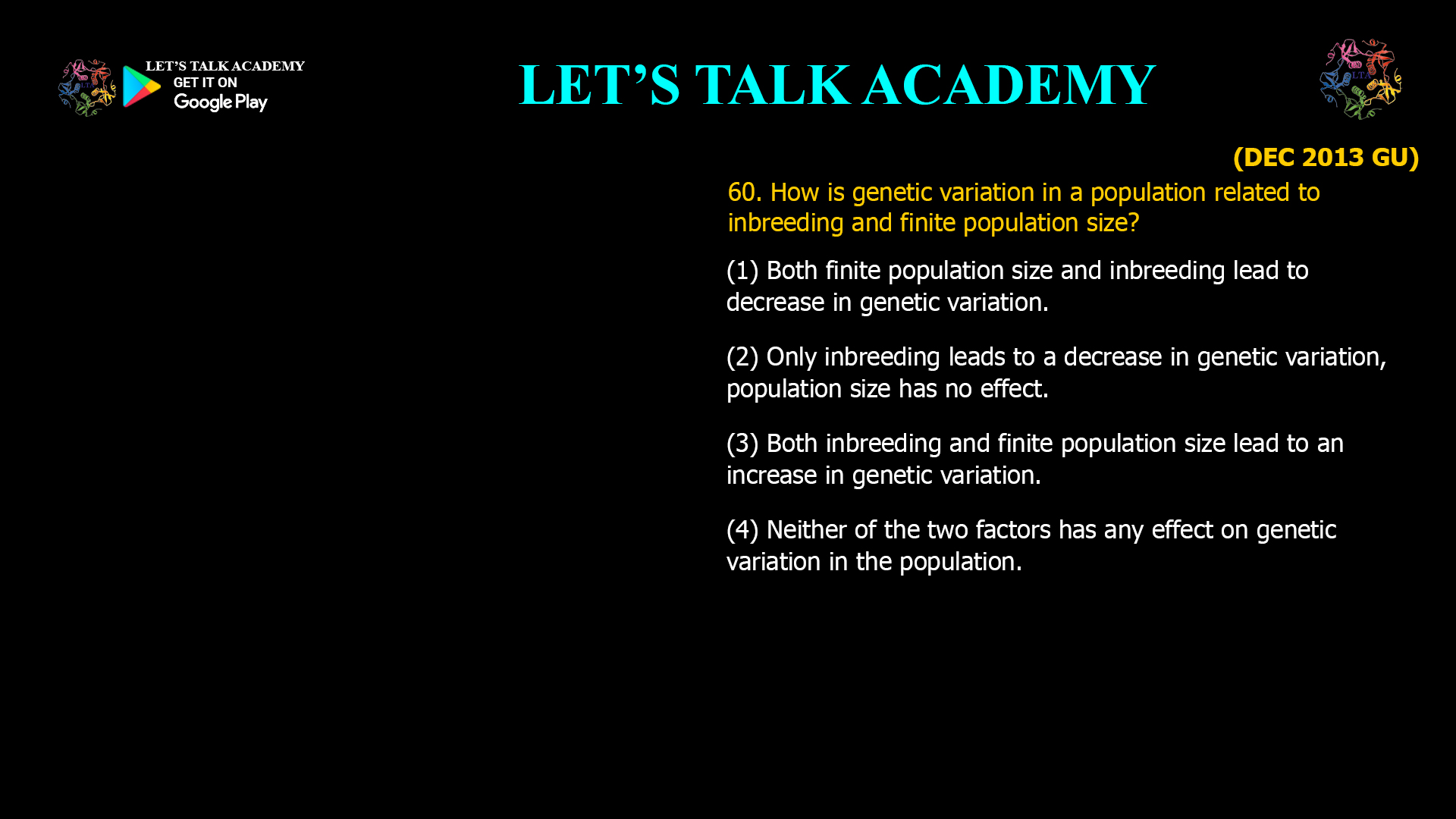- How is genetic variation in a population related to inbreeding and finite population size?
(1) Both finite population size and inbreeding lead to decrease in genetic variation.
(2) Only inbreeding leads to a decrease in genetic variation, population size has no effect.
(3) Both inbreeding and finite population size lead to an increase in genetic variation.
(4) Neither of the two factors has any effect on genetic variation in the population.The Impact of Inbreeding on Genetic Variation
Inbreeding occurs when closely related individuals mate, increasing the chance that offspring will inherit identical copies of genes from both parents. This process leads to:
-
A higher proportion of homozygous individuals in the population.
-
Reduced genetic diversity, as rare alleles are more likely to be lost.
-
Increased risk of inbreeding depression, where harmful recessive traits become more common.
Inbreeding, therefore, decreases genetic variation and can compromise the long-term health and adaptability of a population.
The Role of Population Size
Finite (small) population size also has a profound effect on genetic variation. In small populations, genetic drift—the random fluctuation of allele frequencies—has a stronger impact. This can result in:
-
Loss of alleles from the population purely by chance.
-
Reduced overall genetic diversity, as rare alleles are more likely to disappear.
-
Lower evolutionary potential, making the population less able to adapt to new challenges.
Studies consistently show that larger populations maintain higher levels of genetic diversity, while smaller populations lose variation more rapidly due to drift and bottleneck events.
Scientific Evidence
Research in both wildlife and human populations confirms these patterns. For example, abundant species with large population sizes almost always have higher genetic diversity than rare or isolated species. Conversely, small populations and those experiencing inbreeding show a marked reduction in genetic variation, limiting their evolutionary potential and increasing their vulnerability to extinction.
Conclusion
Both finite population size and inbreeding lead to a decrease in genetic variation. This reduction in diversity can have serious consequences for the survival and adaptability of populations, highlighting the importance of maintaining large, interconnected populations and minimizing inbreeding in conservation efforts.
Correct answer:
(1) Both finite population size and inbreeding lead to decrease in genetic variation. -




1 Comment
Priti khandal
November 7, 2025Answer 1 is correct Both finite population size and inbreeding lead to decrease in genetic variation.